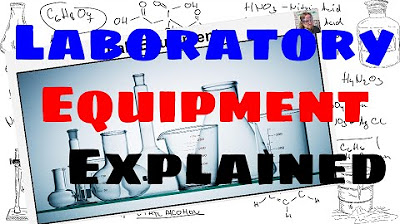The Four States of Matter - Explained
Summary
TLDRIn this educational video, Mr. Millings explores the four states of matter: solid, liquid, gas, and plasma. He explains the particle arrangement and properties of each state, emphasizing how they differ in shape, volume, and compressibility. The video also covers phase transitions such as melting, evaporation, condensation, freezing, sublimation, and deposition, highlighting the physical changes and energy exchanges involved. Mr. Millings concludes by stressing the importance of understanding energy's role in these transitions.
Takeaways
- 🧊 The four states of matter are solid, liquid, gas, and plasma.
- 🔍 Solids have tightly packed particles with a definite shape and volume, and are not easily compressible.
- 💧 Liquids have particles that are closer together than gases but take the shape of their container, maintaining a definite volume.
- 🌬️ Gases have large spaces between particles, are in constant motion, and can expand to fill their container, being easily compressible.
- 🌌 Plasma is a superheated, ionized gas found in extremely hot environments like stars and certain types of lighting.
- 🔥 The process of changing from solid to liquid is called melting, and from liquid to gas is called evaporation.
- 🧊 The process of changing from gas to liquid is called condensation, and from liquid to solid is called freezing.
- 🌬️ Sublimation is the process where a solid turns directly into a gas without becoming a liquid first, like dry ice does.
- ❄️ Deposition is the process where gas turns directly into a solid without becoming a liquid, which is how snow is formed.
- 🔄 All changes in state of matter are physical changes, with no chemical change occurring in the substance itself.
- ⚡️ Energy is either absorbed or released during changes in state of matter, such as melting (absorbing energy) and freezing (releasing energy).
Q & A
What are the four states of matter mentioned in the script?
-The four states of matter mentioned in the script are solid, liquid, gas, and plasma.
What is the characteristic particle arrangement in a solid?
-In a solid, particles are very close to one another, tightly packed, and often form geometric patterns.
How does the shape of a solid differ from that of a liquid?
-Solids have a definite shape, whereas liquids take the shape of their container.
What happens to the particle arrangement as matter transitions from solid to liquid?
-As matter transitions from solid to liquid, particles spread out and move further away from each other.
Is a solid compressible? If so, to what extent?
-Solids are generally not compressible, but they can be compressed a tiny bit under extreme conditions.
How does the space between particles in a gas compare to that in a solid or liquid?
-The space between particles in a gas is much greater than in solids or liquids, allowing for more freedom of movement.
What is the process called when a solid turns into a liquid?
-The process of a solid turning into a liquid is called melting.
How does the process of evaporation differ from condensation?
-Evaporation is the process of a liquid turning into a gas, while condensation is the process of a gas turning back into a liquid.
What is plasma, and where is it commonly found?
-Plasma is a superheated, ionized gas and is commonly found in areas of extreme heat, such as stars and plasma TVs.
What is sublimation, and how does it differ from deposition?
-Sublimation is the process where a solid turns directly into a gas without passing through the liquid stage, while deposition is the process where a gas turns directly into a solid.
Are changes in the state of matter physical or chemical changes? Why?
-Changes in the state of matter are physical changes because they involve a change in the arrangement of particles without altering the chemical composition of the substance.
How does energy relate to changes in the state of matter?
-Energy is either absorbed or released during changes in the state of matter. For example, energy is absorbed during melting and evaporation, while it is released during freezing and condensation.
Outlines

このセクションは有料ユーザー限定です。 アクセスするには、アップグレードをお願いします。
今すぐアップグレードMindmap

このセクションは有料ユーザー限定です。 アクセスするには、アップグレードをお願いします。
今すぐアップグレードKeywords

このセクションは有料ユーザー限定です。 アクセスするには、アップグレードをお願いします。
今すぐアップグレードHighlights

このセクションは有料ユーザー限定です。 アクセスするには、アップグレードをお願いします。
今すぐアップグレードTranscripts

このセクションは有料ユーザー限定です。 アクセスするには、アップグレードをお願いします。
今すぐアップグレード関連動画をさらに表示
5.0 / 5 (0 votes)






